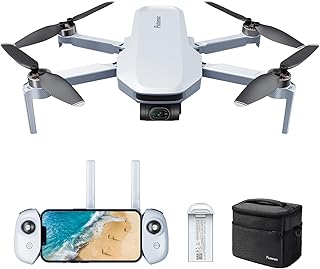Potensic Drones: Safety Features and Regulations
Potensic offers a range of drones for recreational and hobbyist use, catering to different levels of experience. While their specific safety features vary depending on the model, here's a general overview:
Common Safety Features:
* GPS Positioning: Most Potensic drones use GPS to determine their location, helping with navigation and return-to-home functionality.
* Obstacle Avoidance: Certain models feature ultrasonic sensors or optical flow technology to detect obstacles and avoid collisions.
* Low Battery Warning: The drone will alert you when its battery is low, allowing you to land safely before it runs out of power.
* Emergency Stop: Many drones have a dedicated button for immediate stopping, halting the drone's flight in an emergency.
* Flight Limit: Most models offer adjustable altitude and range limitations to keep the drone within a safe operating area.
* Return-to-Home (RTH): This feature allows the drone to automatically return to its take-off point if signal is lost, low battery detected, or the pilot commands it.
Specific Safety Features:
* Potensic T25: Features GPS positioning, RTH, low battery warning, and emergency stop.
* Potensic Dreamer: Offers GPS positioning, RTH, low battery warning, and flight limit settings.
* Potensic A20W: Includes GPS positioning, RTH, low battery warning, and a "follow me" mode for tracking the pilot.
Regulations:
* FAA Registration: In the United States, most drones, including Potensic models, must be registered with the Federal Aviation Administration (FAA). Registration is free and requires a valid email address and a US postal address.
* Flight Restrictions: There are specific areas where drone flights are restricted, such as airports, national parks, and areas where security concerns exist. You must be aware of and follow these restrictions.
* Flying Responsibly: It is important to fly responsibly and within the legal limits. This includes staying below 400 feet, maintaining visual line of sight, and avoiding flying over crowds, stadiums, or private property without permission.
Important Considerations:
* Pilot Proficiency: It's crucial to be familiar with drone operation and understand the safety features before flying.
* Weather Conditions: Avoid flying in windy or stormy weather conditions, as these can affect drone stability and control.
* Maintenance: Regular maintenance and battery checks are essential for safe drone operation.
By following these safety guidelines, you can ensure responsible and enjoyable drone flying experiences.
Note: This is a general overview, and specific features and regulations may vary depending on the drone model and your location. Always consult the user manual and relevant authorities for the most up-to-date information.


